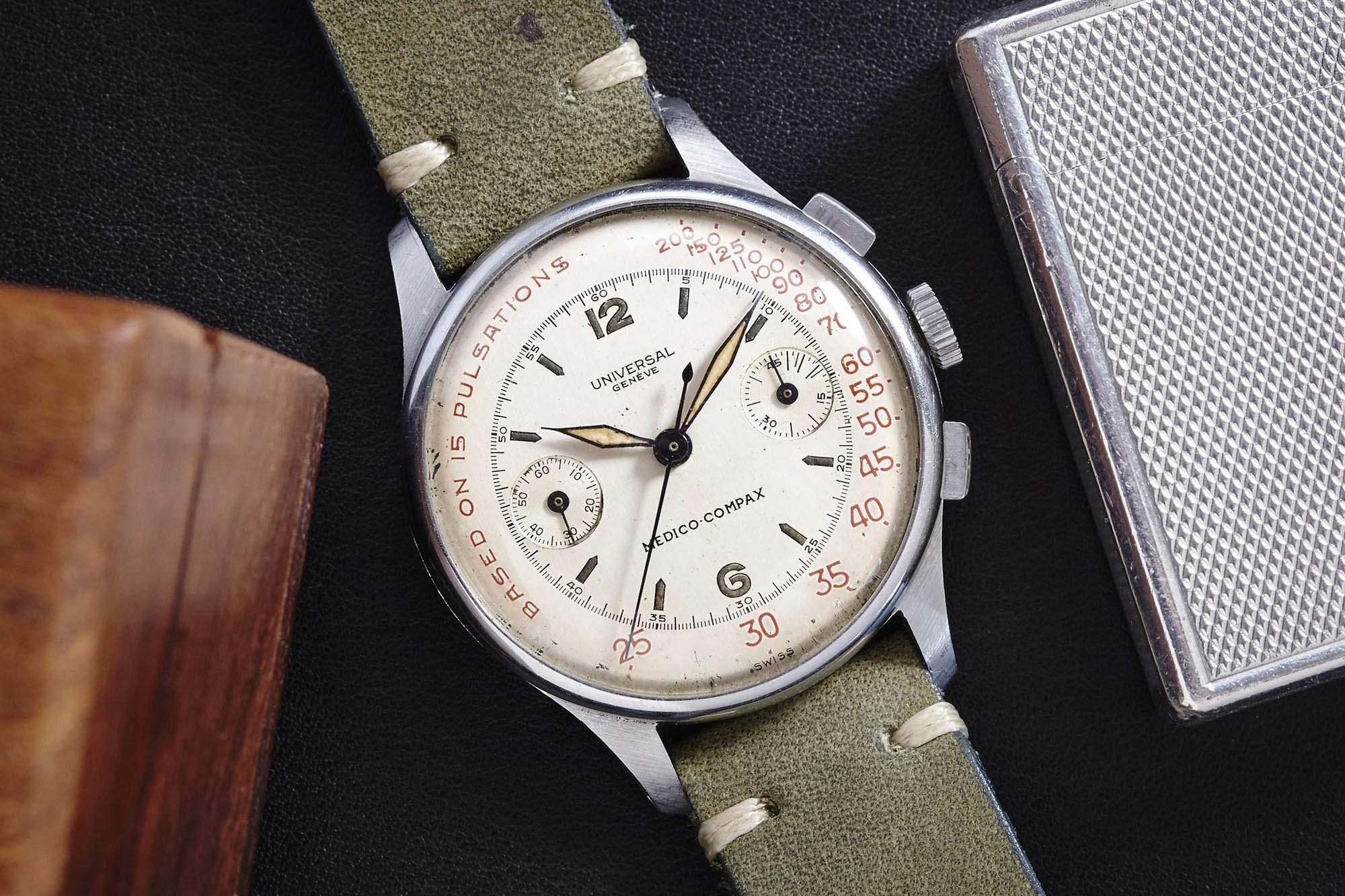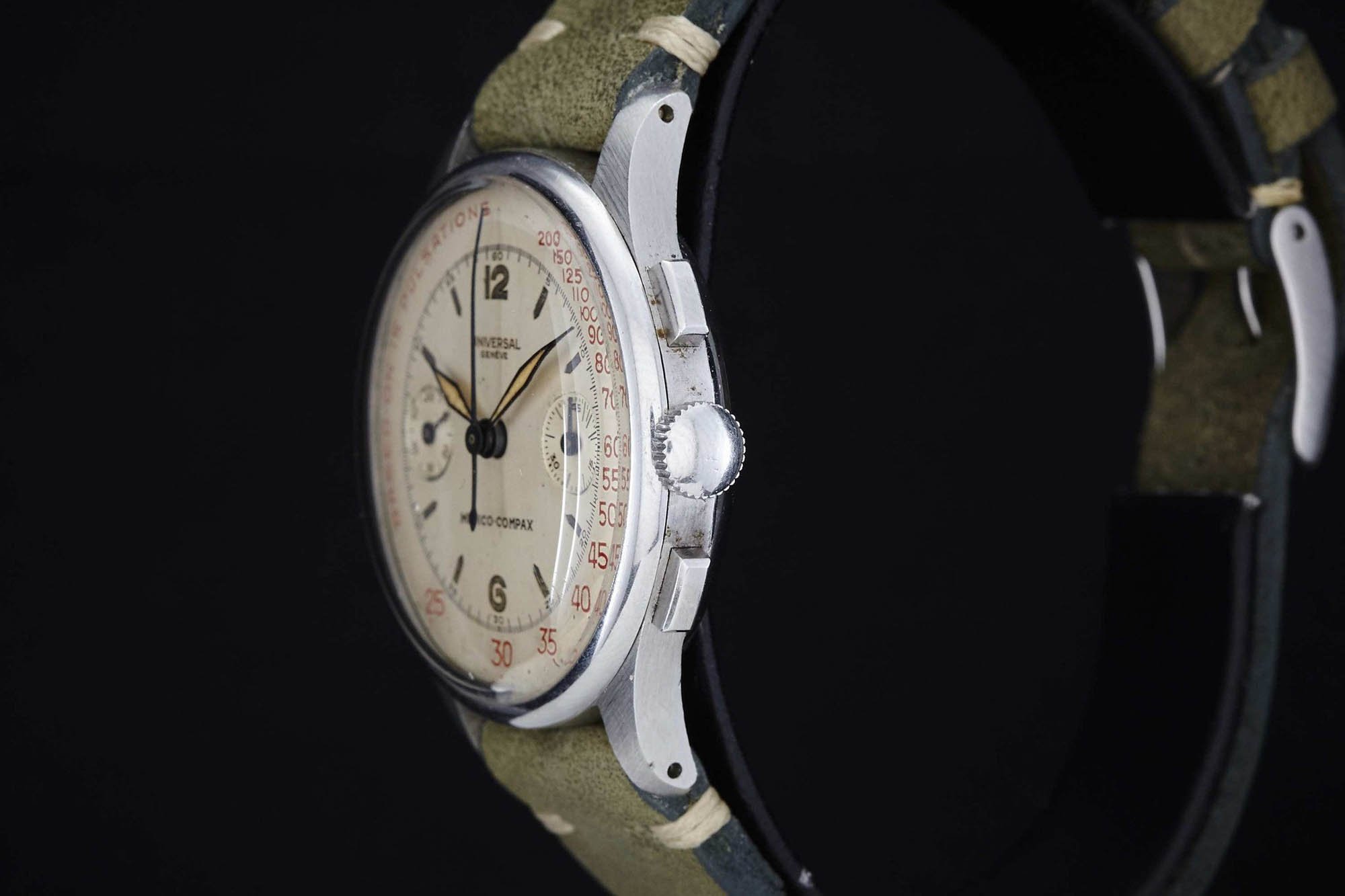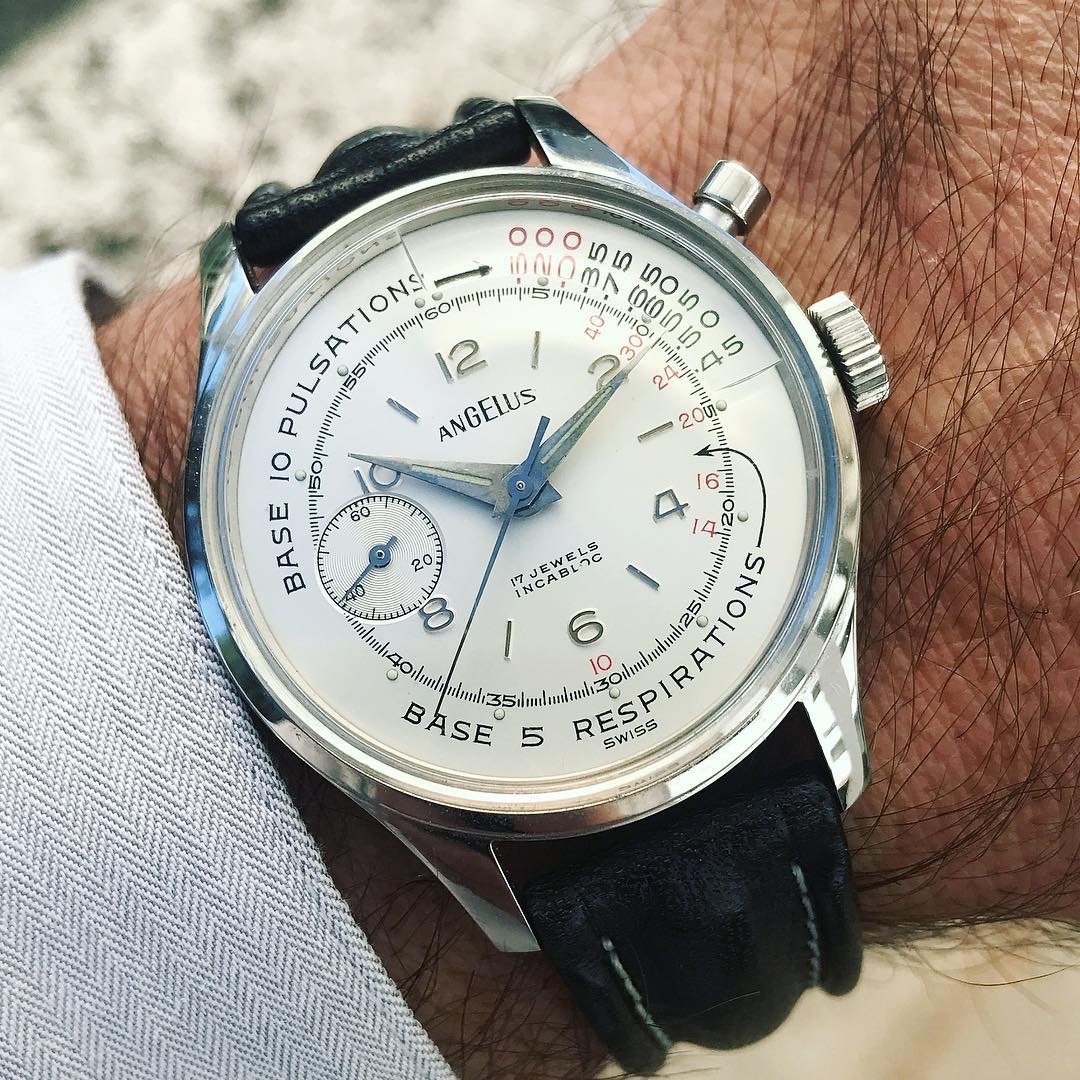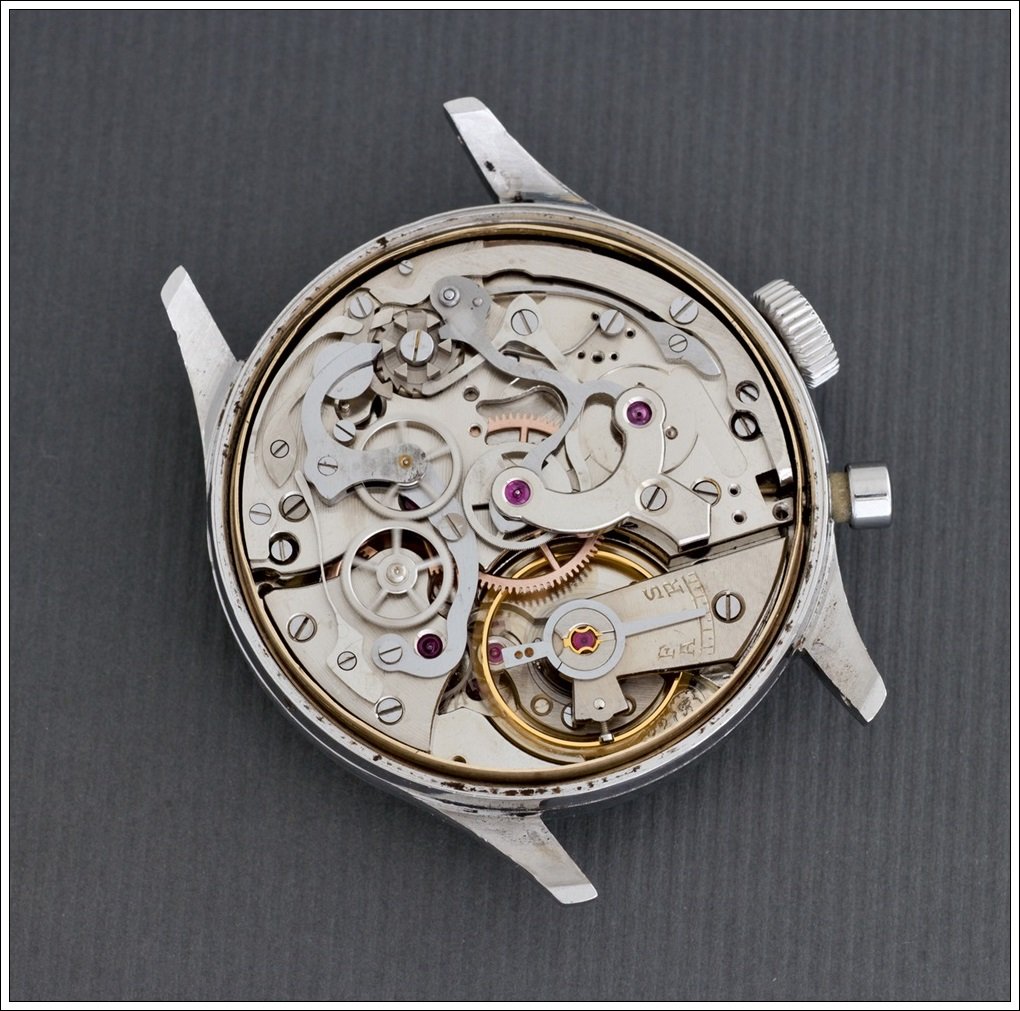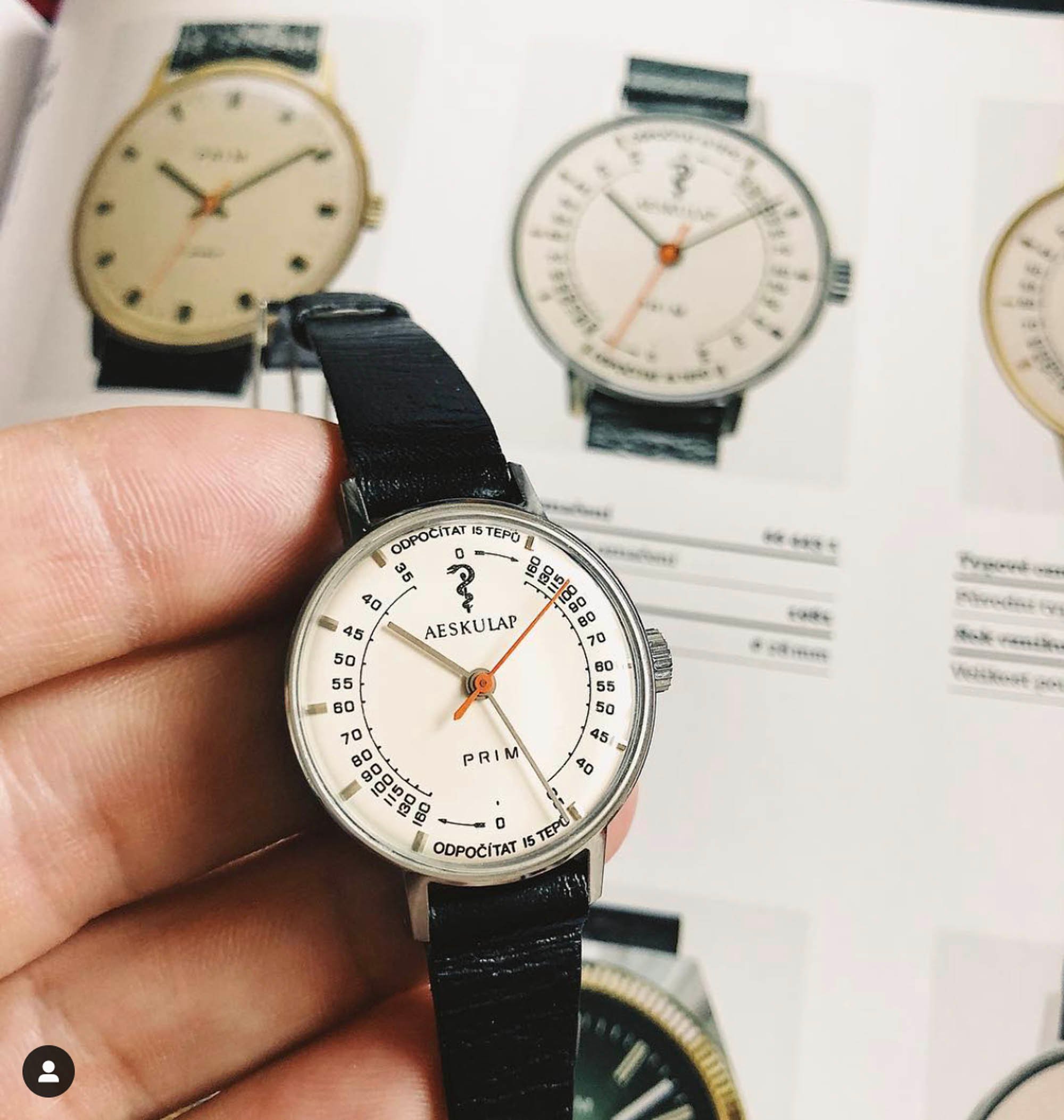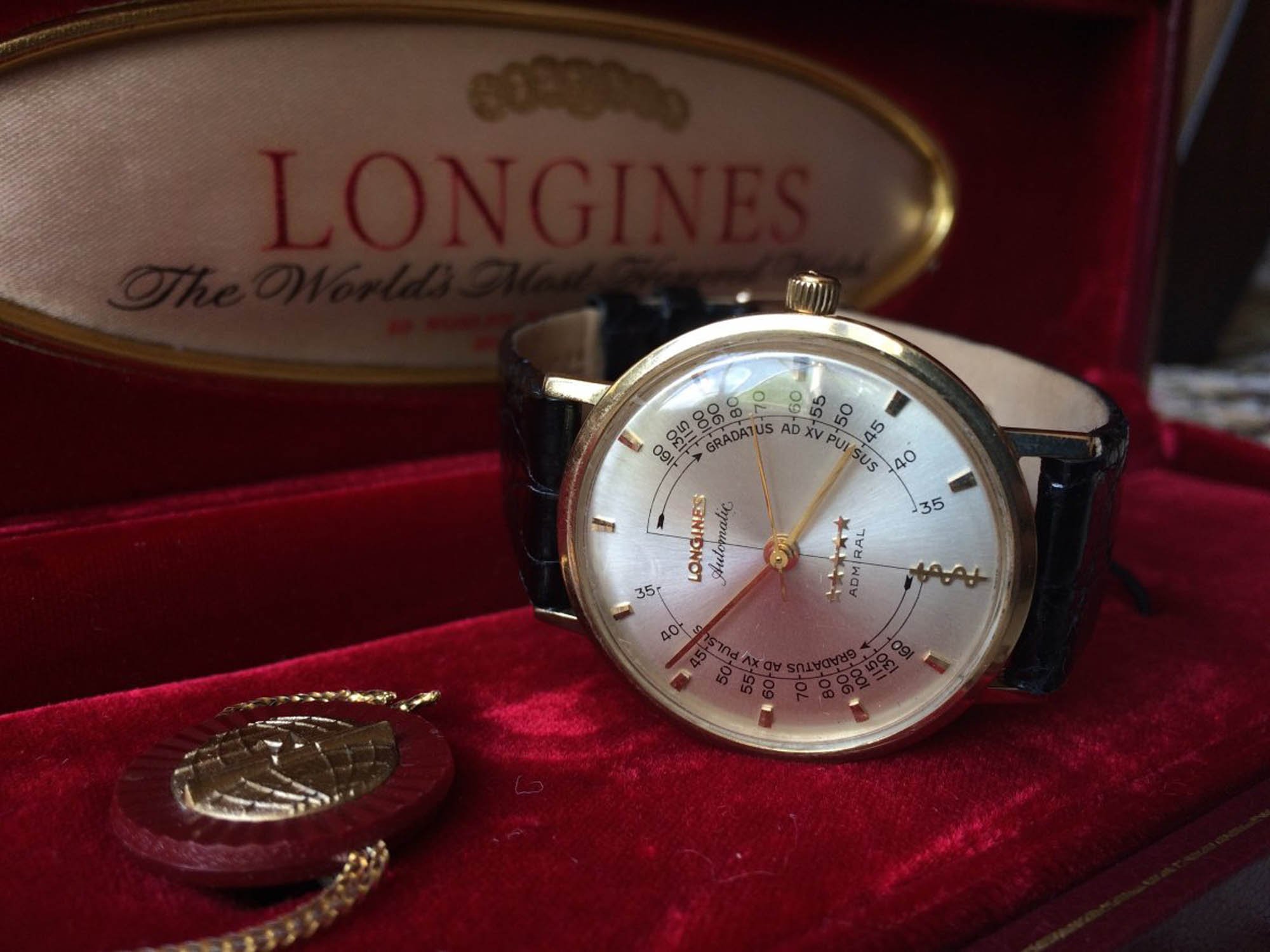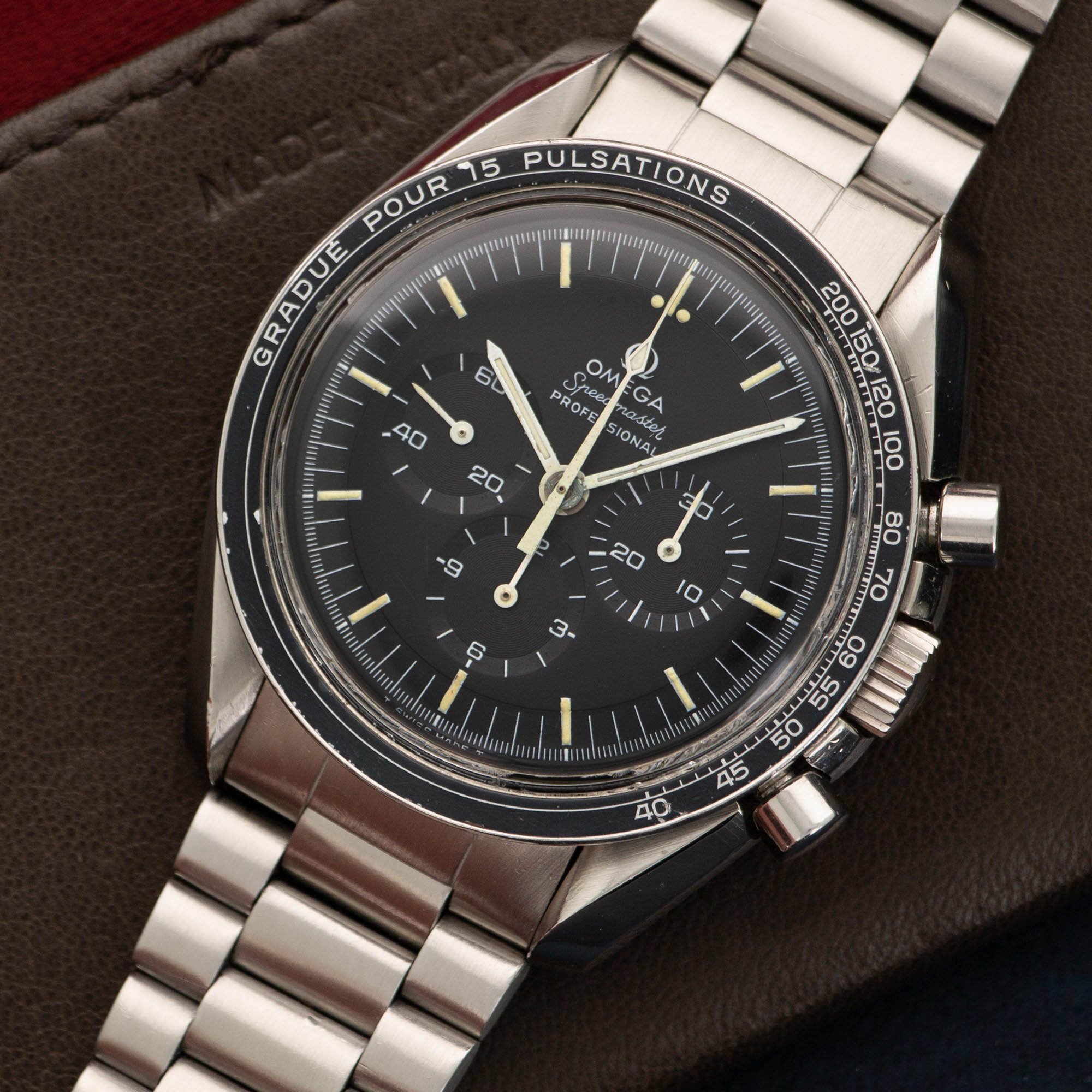#TBT Vintage Pulsation Watches For Your Wishlist
Pulsographs or pulsometers could be found not only in chronographs but also on classy three-handers. So let’s dive into some of the best vintage pulsation watches on the market.
Most vintage watches have a rate of five beats per second or 18,000 beats per hour. When you consider that, it seems amazing that a physical object can operate for such a long period of time. 18,000 beats per hour equate to 432,000 beats per day, and a gob-smacking 157,680,000 per year. That’s nearly 160 million opportunities for something to go wrong. And yet they beat on. Well-made movements continue to function for decades after the balance wheel was set on its way. And since these mechanical marvels are working so hard, it’s only right we give them something fun to work with. Adding a pulsation scale to the dial adds more visual interest, as well as a secondary function to a watch. Today we will look at some of my favorite pulsation or medical watches.
Beauty of the pulsation dial
Most often, you can see pulsation scales added to bi-compax chronographs. It seems a simple minor modification, but it drastically changes the appearance of the watch. The edge of the dial is not as overstuffed as a traditional chronograph. The central time ring shrinks much more, so the outer pulsation scale gets room to breathe. The pulsation reading marks are not as busy as a tachymeter track. This allows for generous, and frequently artsy pulsation markings.
Universal Genève Medico-Compax
Gradue pour 30 pulsations. Calculé sur 15 pulsation. Or in case of this Universal Genève you can find an English version that says, ‘Based on 15 pulsations,’ instead. To calculate your pulse, you have to stop the chrono at the 15thheartbeat. The red number, over which the central chronograph hand stops, indicates your pulse.
Pulsing design
A diameter of 36mm sounds small (especially by modern standards), thanks to a very thin ring holding the plexiglass, the dial rivals in size with the biggest multiplex screens in your city. That means this would have looked a rather large watch when it was released in the 1940s/1950s. Brick-like pushers (a nice aesthetic flourish), add even more weight to proceedings. The result is welcome. Meanwhile, on the dial, cute little sub-registers have been expelled to the edge of the minute track, but not a millimeter more. The white space beyond the minute track is not encroached and reserved for pulsations only. The pulse numbers printed in an urgent red. enlarge gradually until they almost reach the size of hour indexes.
My favorite UG
For me, this model possesses one of the simplest and cleverest dial designs. Without a doubt, it reflects the chronograph cues of the time, yet it is slightly different. As such, it shines with its own character. The Medico Compax inscription confirms it was intended to be used as a professional tool. I apologize, but I have to say, despite all the Evil Ninas or Polerouter Subs this would be the Universal Genève for me.
Angelus Medical
If there was to be one and only Angelus to be added to my collection, I would skip on the Hungarian Military Chrono, or Datalarmand I would go straight for the Angelus watch for doctors. This mid-’60s steel beauty comes in at a perfectly vintage 36mm diameter, equipped with a modified Valjoux 22. Angelus just got rid of the minute counter and featured not only the pulsation dial but also added a breath frequency scale (an asthmometer).
Magic magnifying crystal
Contrary to any typical tachymeter scales, the pulsation ring of the Angelus Medical looks as spacious as a three-lane highway on Sunday morning. The super quirky crystal that comes with a magnifying arc above the pulsation scale will make you want one immediately. Notice how aligned the pulsation rates are this time, with the top three highest printed in red and the three lowest in green.
Generic design
Another little detail worth mentioning is a curved arrow next to the respiratory scale. This arrow cuts through the minute track, directing your attention to the respiration read-outs placed on the inner side of the minute track. Although the design appears very unique and refreshing, you can find this same specific design (including the same hands set) on a few other watch brands such as Paul Portinoux or Vernal. Neither the UG or this Angelus come cheap. Get ready to shell out a few thousand euros. And if you find one of these pulsation watches in good condition, don’t hang about. The last few I saw listed disappeared very quickly.
Prim Aeskulap Nurse Watch
In Greek mythology, the Rod of Asclepius is a serpent-entwined rod wielded by the Greek god of medicine. This symbol took center stage on the dial on the Prim Aeskulap from the early eighties. From the hundreds of watch models that the Czech manufacturer Prim produced, Aeskulap is the only watch made for medical specialists. The watch is just 28mm in diameter and was designed for nurses. There are no pushers; there is no chronograph. A typical three-hander uses a dial halved with two mirroring pulse scales and a central second hand to read the pulse. While chronograph pulsation watches offer pulse reading on-demand, with the Aeskulap a nurse had to wait until the second hand reached one of two zero positions at 12 or 6 before counting 15 pulsations.
Not a cheap move
The striking orange seconds hand is a treat. The Czech pulse reading headline, “Odpočítat 15 tep,” is a really nice touch too. Aeskulap was also available in a gold-plated version. If you know any slim-wristed folks looking for a neo-vintage watch, the Aeskulap might be a good recommendation. But don’t be surprised if you see prices of this manual wound Czech piece climb close to around €500. If the design speaks to you and you dare to count your pulse in 14kt solid yellow gold, then look around for the Longines Admiral Pulsometer. With 35mm diameter it should sit on your wrist much better.
Speedmaster Pulsometer
It wouldn’t be a Fratello piece if we forgot to mention the Omega Speedmaster. Omega has made many beautiful pulsation watches, but there is something really special hiding in the Speedmaster family. As the standard tachymeter bezel is so iconic (we could all draw it from memory), seeing an airy pulsation scale around the dial makes for a nice change. I’m not an expert on these, but a pulsometer was an option for Speedmasters since the early 1960s. Today it is easy to stumble upon one, and, if you do, it is wise to check not twice, but thrice to ensure it is all original.
Happy hunting and happy expansion of your watch wish list. If you want to share your wish list or ideas, shoot me a note via [email protected] or a direct message on my Instagram account (@rosputinsky_tomas). And please, don’t forget to comment on the article in regards to these featured watches. We’d love to hear your thoughts!

